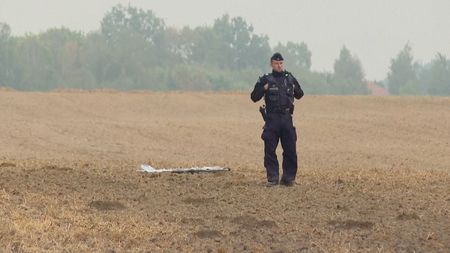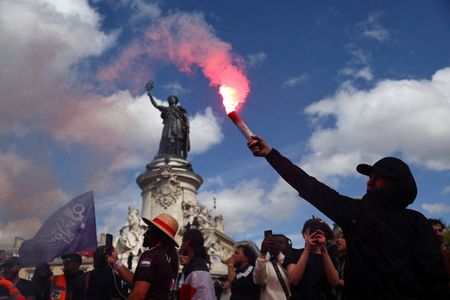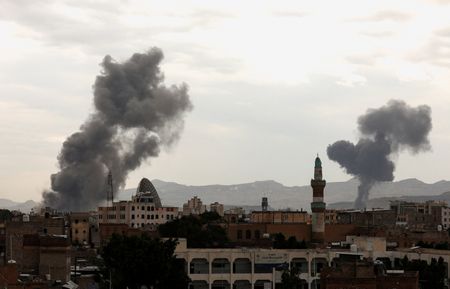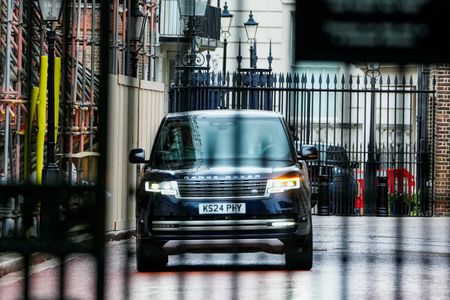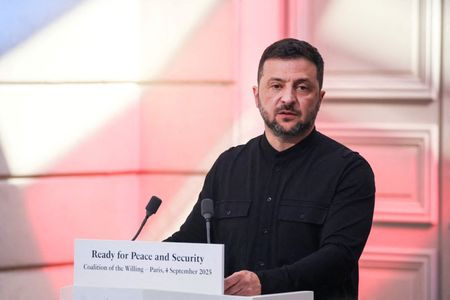By Alan Charlish, Lidia Kelly and Barbara Erling
WARSAW/WYRYKI-WOLA, Poland (Reuters) – Poland shot down suspected Russian drones in its airspace on Wednesday with the backing of aircraft from its NATO allies, the first time a member of the Western military alliance is known to have fired shots during Russia’s war in Ukraine.
Polish Prime Minister Donald Tusk told parliament it was “the closest we have been to open conflict since World War Two”, though he also said he had “no reason to believe we’re on the brink of war”.
Polish F-16 fighter jets, Dutch F-35s, Italian AWACS surveillance planes and NATO mid-air refuelling aircraft scrambled in an operation to shoot down drones entering Polish airspace from Tuesday evening until morning, officials said.
One drone smashed into pensioner Tomasz Wesolowski’s two-storey brick house in the eastern Polish village of Wyryki-Wola at 6:30 a.m. while he was downstairs watching news about the incursion.
The roof was destroyed and debris was strewn across the bedroom. Wesolowski told Reuters the house “needs to be demolished”.
A blackened spot in a field elsewhere in southeastern Poland showed where some other drones had fallen.
Moscow denied responsibility for the incident, with a senior diplomat in Poland saying the drones had come from the direction of Ukraine. Russia’s defence ministry said its drones had carried out a major attack on military facilities in western Ukraine but it had not planned to hit any targets in Poland.
U.S. President Donald Trump plans later on Wednesday to speak with Polish President Karol Nawrocki, a conservative nationalist and political ally whom Trump hosted at the White House last week.
“What’s with Russia violating Poland’s airspace with drones? Here we go!” Trump posted on Truth Social, without elaborating.
The leaders of France, Britain, Germany and Canada were among NATO leaders to condemn the Russian incursion in strong terms.
European leaders, who have been trying to persuade Trump to join them in tightening sanctions on Russia and boosting support for Kyiv, said it justified a collective response.
Poland said 19 objects had entered its airspace during a large Russian air attack on Ukraine, and that it had shot down those posing a threat.
Tusk called the incident a “large-scale provocation” and said he had activated Article Four of NATO’s treaty, under which alliance members can demand consultations with their allies.
Neither Poland nor NATO has yet given a full account of what they suspect the drones were doing. One senior military source said that at least five of the drones’ flight paths indicated they were headed towards Rzeszow airport, NATO’s main hub for arms supplies to Ukraine.
TESTING NATO CAPABILITIES?
The source said Russia may have been trying to test the capabilities of NATO’s air defences and warning systems.
NATO declined to comment on whether that was their assessment, referring the question to NATO chief Mark Rutte’s remarks earlier when he said an investigation was ongoing but that the incursion was “absolutely reckless”.
Andrey Ordash, Russia’s charge d’affaires in Poland, was cited by RIA state news agency as calling accusations of an incursion “groundless” and said Poland had not given any evidence that the drones shot down were of Russian origin.
The Kremlin declined to comment directly on the incident but spokesperson Dmitry Peskov said the EU and NATO “accuse Russia of provocations on a daily basis. Most of the time without even trying to present at least some kind of argument.”
During the incident, the Operational Command of the Polish Armed Forces urged residents to stay at home, with three eastern regions at particular risk.
Several Polish airports were temporarily closed, including Rzeszow, which has been used as the main access point for Western officials and supplies travelling to Ukraine overland.
Countries bordering Ukraine have reported occasional Russian missiles or drones entering their airspace in the past during the war, but not on such a large scale, and they are not known to have shot them down. Two people were killed in Poland in 2022 by a Ukrainian air defence missile that went astray.
Since NATO’s creation in 1949, Article 4 has been invoked seven times, most recently in February 2022 following Russia’s invasion of Ukraine.
“This is going to shock the NATO alliance and the border countries, they’re all in the same situation,” said Riki Ellison, an expert on missile defence close to U.S. and allied military forces.
“It’s not the beginning of World War Three, but it’s evolving Russia’s understanding of how we fight and our weaknesses, and the weaknesses of the alliance.”
Russia has long said it has no intention of stoking a war with NATO and that Western European countries suggesting it is a threat were trying to worsen relations.
European Commission President Ursula von der Leyen called for more sanctions on Russia, and said the EU was preparing sanctions on “shadow fleet” tankers that transport its oil and third countries that buy it.
Trump, who warmly welcomed Putin in Alaska at a summit in August, said over the weekend he was ready to move to a second phase of sanctioning Russia after months of talks about a peace deal.
(Reporting by Lidia Kelly, David Shepardson, Steve Gorman, Andrea Shalal, Alan Charlish, Marek Strzelecki, Pawel Florkiewicz, Sabine Siebold, Andrew Gray, Karol Badohal and Barbara Erling, Katharine Jackson, Ryan Patrick Jones, Jeff Mason; Writing by Lidia Kelly and Matthias Williams; Editing by Peter Graff and Jon Boyle)

